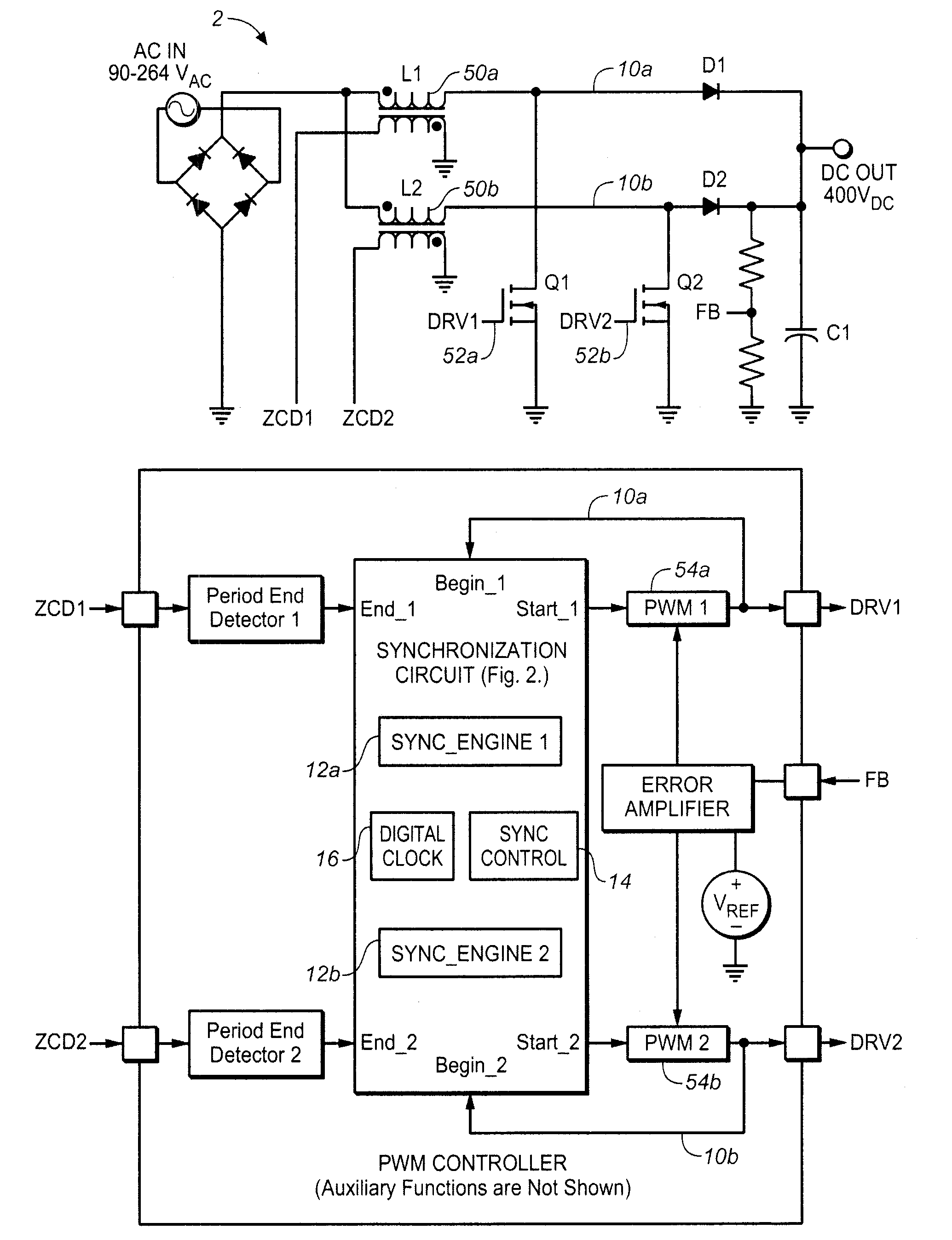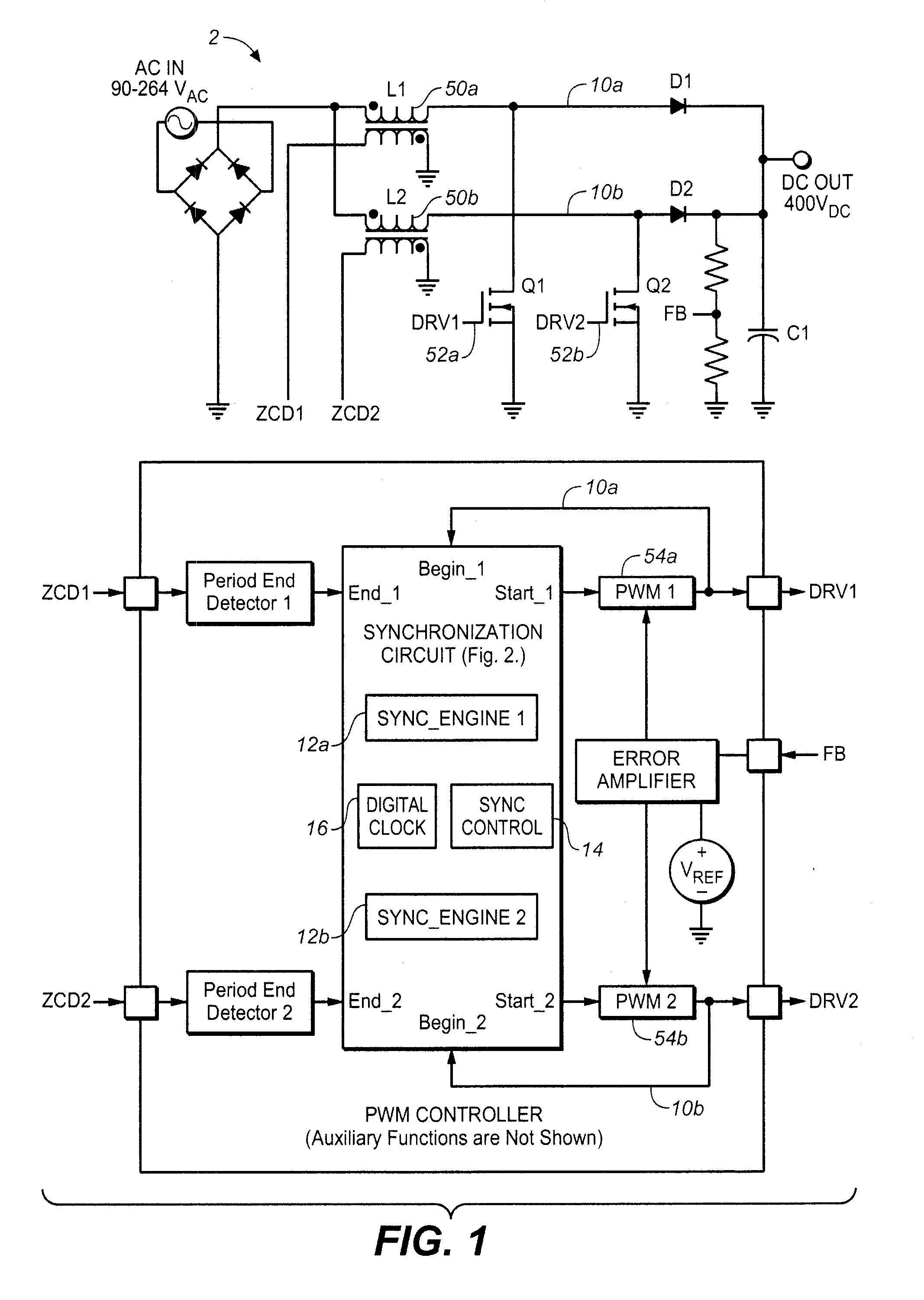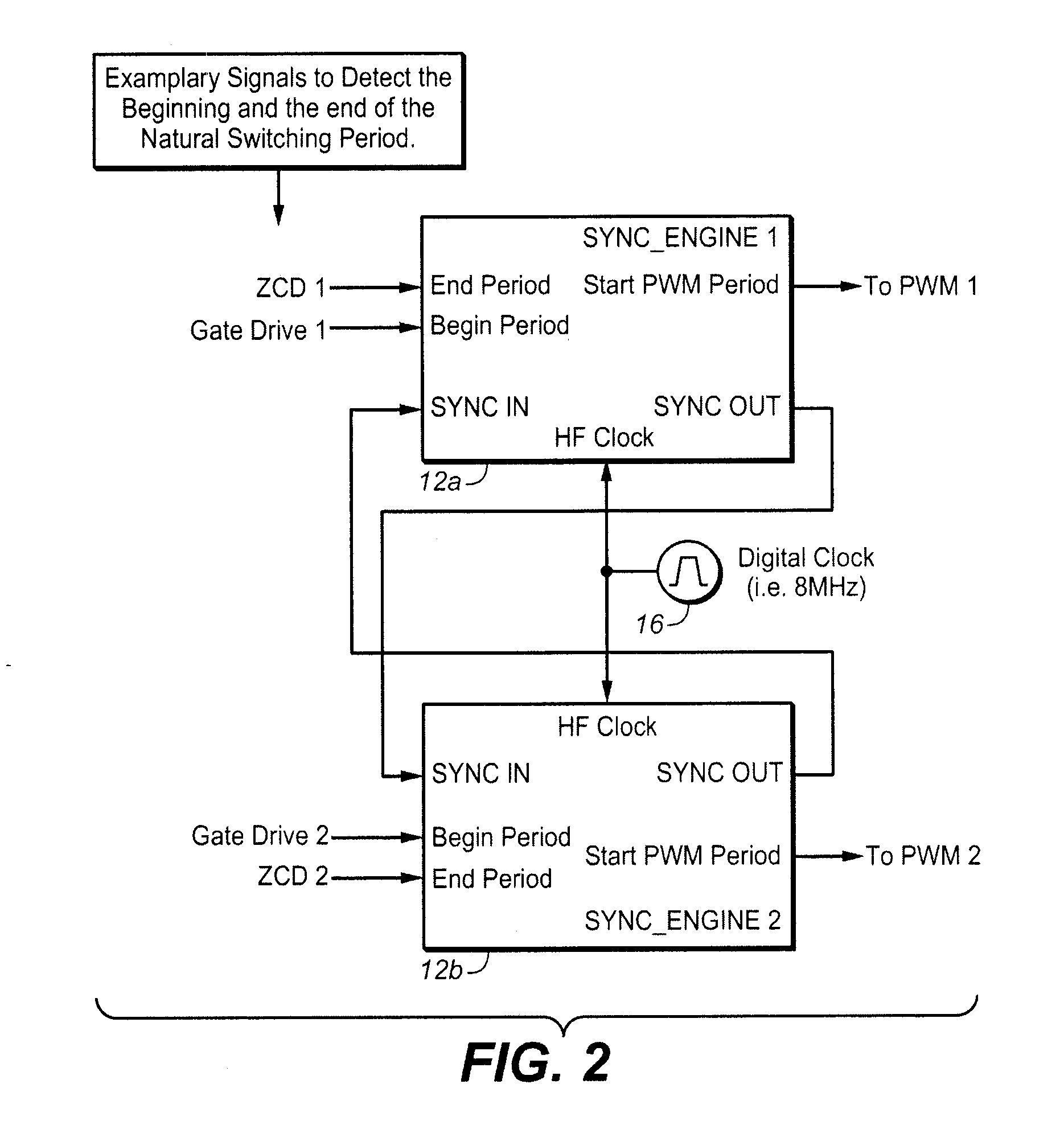Synchronizing Frequency and Phase of Multiple Variable Frequency Power Converters
a power converter and multiple variable technology, applied in the field of power conversion, can solve the problems of difficult synchronization, difficult synchronization, and even more difficult synchronization, if implemented in analog circuitry, and achieve the effect of synchronizing and synchronizing even more difficul
- Summary
- Abstract
- Description
- Claims
- Application Information
AI Technical Summary
Benefits of technology
Problems solved by technology
Method used
Image
Examples
Embodiment Construction
[0020]Embodiments of the present invention and their advantages are best understood by referring to FIGS. 1-7 of the drawings. Like numerals are used for like and corresponding parts of the various drawings.
[0021]FIG. 1 illustrates a system 2 having a plurality of variable frequency power converters 10 (separately labeled 10a and 10b) which can be synchronized with circuitry and methods, according to embodiments of the invention.
[0022]As shown, each power converter 10 may include an inductor 50, a switching device 52, and drive circuitry (including a pulse width modulator (PWM) 54). Each power converter 10 can be a switching converter in which the frequency at which the respective switching devices 52 are turned on and off may vary, such as, for example, a boundary conduction mode (BCM) power factor correction (PFC), a quasi-resonant flyback converter, or a resonant converter. As shown, each variable frequency power converter 10 is a BCM PFC converter. In the BCM converters, the ind...
PUM
 Login to View More
Login to View More Abstract
Description
Claims
Application Information
 Login to View More
Login to View More - R&D
- Intellectual Property
- Life Sciences
- Materials
- Tech Scout
- Unparalleled Data Quality
- Higher Quality Content
- 60% Fewer Hallucinations
Browse by: Latest US Patents, China's latest patents, Technical Efficacy Thesaurus, Application Domain, Technology Topic, Popular Technical Reports.
© 2025 PatSnap. All rights reserved.Legal|Privacy policy|Modern Slavery Act Transparency Statement|Sitemap|About US| Contact US: help@patsnap.com



